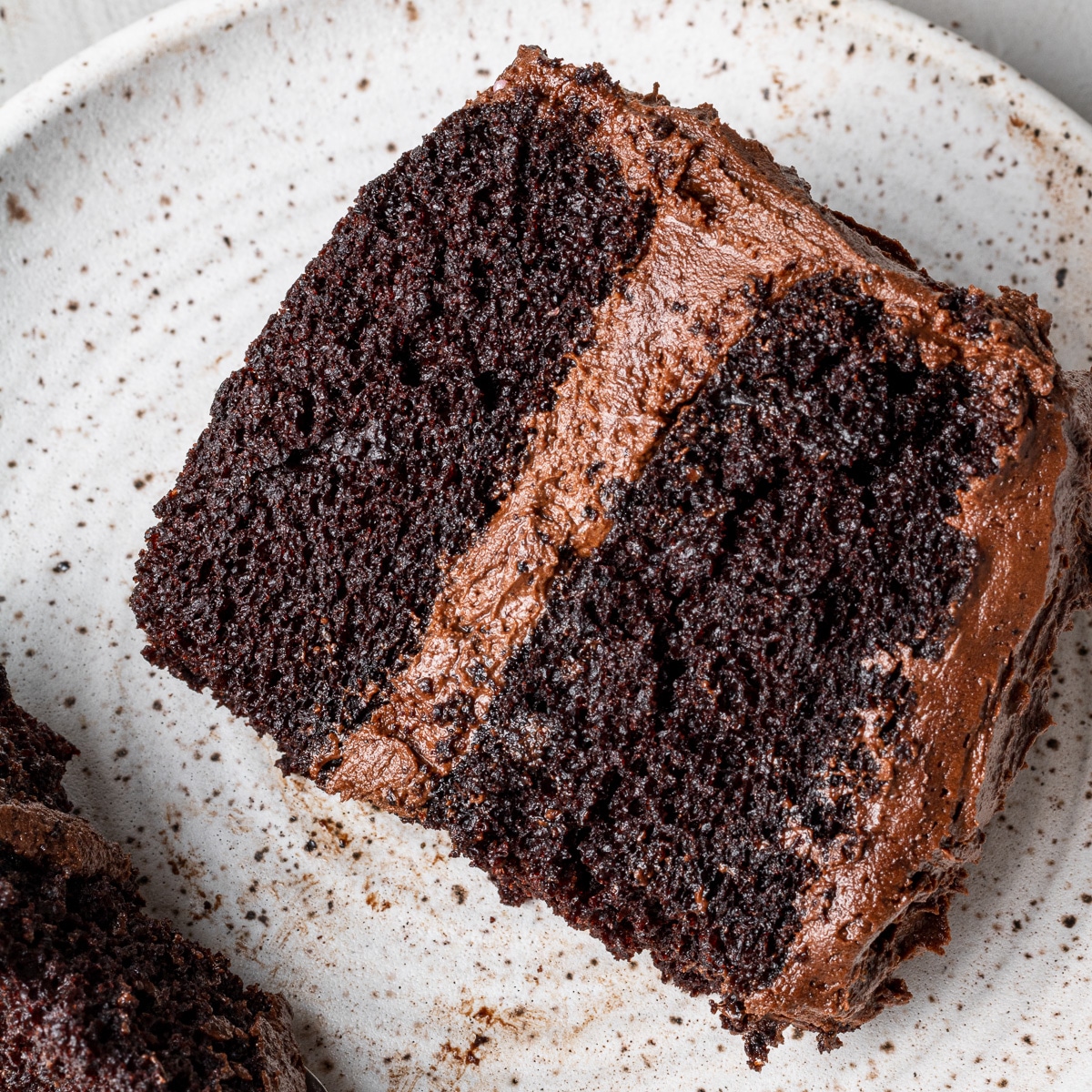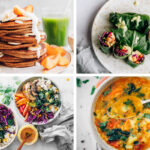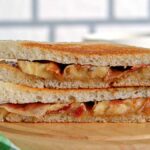Imagine a cloud-like cake, light and airy, bursting with flavor—but completely free of gluten, eggs, and dairy. Sounds impossible? Think again! This guide unveils the secrets to crafting incredibly fluffy cakes without these common ingredients, exploring innovative substitutes and techniques that deliver surprisingly delightful results. We’ll navigate the world of gluten-free flour blends, egg replacements, and dairy-free alternatives, empowering you to bake delicious and inclusive treats for everyone.
From understanding the impact of starch-to-protein ratios in gluten-free flours to mastering the art of egg and dairy substitutions, we’ll equip you with the knowledge and confidence to conquer even the most challenging baking projects. We’ll delve into the science behind achieving that perfect fluffy texture, exploring the roles of leavening agents and precise mixing techniques. Prepare to be amazed by the possibilities of allergen-free baking!
Dairy-Free Alternatives

Creating delicious and fluffy gluten-free, egg-free cakes requires careful consideration of dairy-free alternatives. The right choice of milk and butter substitutes significantly impacts the final texture, moisture, and flavor profile of your cake. Understanding the nuances of each option is key to baking success.
Dairy-free milk alternatives offer a diverse range of flavor profiles and fat contents, each affecting the cake’s outcome differently. The fat content, in particular, plays a crucial role in creating a moist and tender crumb. Similarly, the choice of dairy-free butter substitute influences the cake’s richness and overall texture.
Dairy-Free Milk Comparisons
The selection of dairy-free milk significantly influences the final cake’s moisture and texture. Almond milk, soy milk, and oat milk each possess unique characteristics. Almond milk, often low in fat, can result in a slightly drier cake unless a higher-fat version is used. Soy milk, with its moderate fat content, provides a good balance of moisture and richness. Oat milk, often higher in fat and possessing a naturally creamy texture, lends itself well to creating a moist and tender cake. The choice depends on personal preference and the desired outcome.
Fat Content and Cake Moisture
The fat content of dairy-free milk directly correlates with the cake’s moisture. Higher-fat milk alternatives, like full-fat coconut milk or oat milk, contribute to a more moist and tender crumb. Lower-fat options, such as unsweetened almond milk or light soy milk, may lead to a slightly drier cake. To compensate for lower fat content, consider adding a small amount of oil or applesauce to the batter to increase moisture. For example, substituting unsweetened almond milk might require adding 2-3 tablespoons of oil to maintain optimal moisture.
Dairy-Free Butter Substitutes
Vegan butter and coconut oil are popular choices for replacing butter in gluten-free, egg-free cakes. Vegan butter, often made from plant-based oils and fats, provides a similar texture and richness to traditional butter. It blends seamlessly into the batter, contributing to a smooth and creamy texture. Coconut oil, on the other hand, imparts a distinct coconut flavor that may not be suitable for all recipes. Its high saturated fat content results in a rich, moist cake, but the coconut flavor can be pronounced. Using refined coconut oil minimizes the coconut taste, making it a more versatile option for cakes where a neutral flavor profile is desired.
Achieving Fluffy Texture
Creating a light and airy gluten-free, egg-free, and dairy-free cake requires a deep understanding of leavening agents and meticulous mixing techniques. The absence of gluten, eggs, and dairy necessitates careful adjustments to achieve the desired texture, as these ingredients typically contribute to structure and volume.
Leavening Agent Function and Adjustment
The success of a fluffy gluten-free, egg-free, and dairy-free cake hinges on the proper use of leavening agents. Baking powder, a combination of baking soda and an acid, provides a double-acting lift: once when mixed into the batter and again during baking. Baking soda, a base, requires an acidic ingredient (like lemon juice or vinegar) to react and produce carbon dioxide for leavening. In gluten-free baking, where the structure is less robust, a slightly increased amount of leavening may be needed. However, excessive leavening can result in a coarse, dry crumb. For example, a recipe calling for 2 teaspoons of baking powder in a traditional cake might require 2 1/2 to 3 teaspoons in a gluten-free, egg-free, and dairy-free version. The specific adjustment depends on the chosen alternative ingredients and their inherent moisture content. A recipe that incorporates a significant amount of moisture-rich ingredients like applesauce might need less leavening than one using a drier alternative like mashed banana. Careful experimentation and recipe adaptation are key. It is advisable to start with the lower end of the adjusted range and gradually increase if needed.
Mixing Techniques for a Light Batter
The mixing method significantly impacts the final texture of the cake. Overmixing develops gluten in wheat-based cakes, resulting in a tough texture. While gluten isn’t a concern in gluten-free baking, overmixing can still lead to a dense cake by developing the starch, leading to a tough and chewy texture. Gentle mixing is crucial to incorporate ingredients without over-developing the batter.
- Combine dry ingredients: Whisk together gluten-free flour blend, baking powder, baking soda, and salt in a large bowl to ensure even distribution of leavening agents. Imagine a cloud of fine, evenly dispersed powders, ready to be transformed.
- Combine wet ingredients: In a separate bowl, whisk together dairy-free milk alternative, oil, and any liquid sweeteners (like maple syrup or agave nectar). This creates a smooth, emulsified base, ready to gently blend with the dry ingredients.
- Gently combine wet and dry: Gradually add the wet ingredients to the dry ingredients, mixing with a spatula or a low speed on a mixer until just combined. Avoid overmixing; a few lumps are acceptable. Visualize the gentle incorporation – the wet ingredients are softly enveloping the dry, creating a delicate network of moisture and air.
- Fold in additional ingredients: If using add-ins like chocolate chips or berries, gently fold them in at the end to prevent them from sinking to the bottom. Picture a gentle, swirling motion, carefully distributing the add-ins throughout the light batter.
Baking a Fluffy Gluten-Free, Egg-Free, and Dairy-Free Cake
The baking process itself contributes significantly to the cake’s fluffiness. Maintaining the correct oven temperature and baking time is crucial for even cooking and a tender crumb.
- Preheat oven: Preheat your oven to the temperature specified in your recipe. A properly preheated oven ensures even heat distribution and prevents uneven baking.
- Prepare the pan: Grease and flour (using a gluten-free flour blend) your cake pan thoroughly. This prevents sticking and ensures easy removal of the cake after baking.
- Pour batter: Pour the batter into the prepared pan and spread evenly. Imagine a smooth, even layer of batter, promising a consistently baked cake.
- Bake: Bake for the recommended time, checking for doneness with a toothpick inserted into the center. The toothpick should come out clean or with a few moist crumbs. Avoid overbaking, which can result in a dry cake.
- Cool: Let the cake cool in the pan for 10-15 minutes before inverting it onto a wire rack to cool completely. This allows the cake to set and prevents it from crumbling.
Recipe and Step-by-Step Creation
This recipe yields a delightfully moist and fluffy gluten-free, egg-free, and dairy-free cake, perfect for those with dietary restrictions or sensitivities. The secret lies in the careful balance of ingredients and the gentle handling of the batter. Following these steps will ensure a successful and delicious bake.
Ingredients
1 ½ cups gluten-free all-purpose flour blend (ensure it contains xanthan gum)
1 cup granulated sugar
1 teaspoon baking powder
½ teaspoon baking soda
¼ teaspoon salt
½ cup unsweetened applesauce
½ cup almond milk (or other plant-based milk)
¼ cup vegetable oil
1 teaspoon vanilla extract
½ cup boiling water
Equipment
Two 9-inch round cake pans
Mixing bowls (large and medium)
Measuring cups and spoons
Whisk
Spatula
Electric mixer (handheld or stand)
Parchment paper
Preparation
Preheat your oven to 350°F (175°C). Grease and flour (with gluten-free flour) the two 9-inch cake pans, or line the bottoms with parchment paper for easy removal. This prevents sticking and ensures clean release of the baked cakes.
In a large bowl, whisk together the gluten-free flour, sugar, baking powder, baking soda, and salt. The mixture should appear light and airy, with no visible clumps of flour.
In a medium bowl, combine the applesauce, almond milk, oil, and vanilla extract. Mix until well combined. The mixture will have a slightly thick, creamy consistency.
Baking
Gradually add the wet ingredients to the dry ingredients, mixing on low speed with an electric mixer until just combined. Overmixing can lead to a tough cake, so mix only until the batter is smooth. The batter will be relatively thick but pourable.
Slowly pour in the boiling water while mixing on low speed. The batter will become thinner and slightly more glossy. The boiling water helps activate the baking powder and soda, creating a lighter texture.
Divide the batter evenly between the prepared cake pans. The batter should fill each pan about halfway. Smooth the tops of the batter with a spatula.
Bake for 30-35 minutes, or until a wooden skewer inserted into the center comes out clean. The cakes should be golden brown on top and spring back slightly when gently pressed.
Cooling
Let the cakes cool in the pans for 10 minutes before inverting them onto a wire rack to cool completely. A toothpick inserted into the center should come out clean; if not, continue baking in 5-minute intervals until it does. The cakes will be golden brown, with a slightly firm texture when ready.
Once completely cool, frost and decorate as desired. The cakes should have a light and airy crumb, with a delicate sweetness. If the cakes are over-baked, they will appear dry and cracked on the surface.
Baking a fluffy, delicious cake without gluten, eggs, or dairy is entirely achievable with the right knowledge and techniques. By carefully selecting gluten-free flour blends, employing effective egg and dairy replacements, and mastering the art of leavening and mixing, you can create cakes that are not only free from common allergens but also incredibly light and airy. This guide provides a comprehensive roadmap to unlock the secrets of allergen-free baking, empowering you to delight yourself and others with truly exceptional, inclusive treats. The journey might involve a little experimentation, but the reward—a perfect, fluffy cake—is well worth the effort.
Q&A
Can I use other types of dairy-free milk besides almond, soy, and oat milk?
Yes, you can experiment with other plant-based milks like cashew milk, rice milk, or coconut milk. However, their fat content and sweetness will affect the final cake’s texture and flavor, so adjustments to the recipe might be necessary.
How can I store my gluten-free, egg-free, and dairy-free cake?
Store your cake in an airtight container at room temperature for up to 3 days or in the refrigerator for up to a week. Freezing is also an option; wrap the cake tightly in plastic wrap and then foil before placing it in a freezer bag.
What if my cake is too dense or gummy?
This often indicates insufficient leavening or overmixing. Ensure you’re using fresh baking powder and baking soda, and avoid overmixing the batter. Gentle folding is key to achieving a light and airy texture.
My cake is crumbly; how can I fix this?
Crumbly cakes are usually a result of insufficient moisture. Try adding a tablespoon or two of dairy-free milk or applesauce to the batter next time. You can also ensure your baking powder is fresh and hasn’t lost its leavening power.


